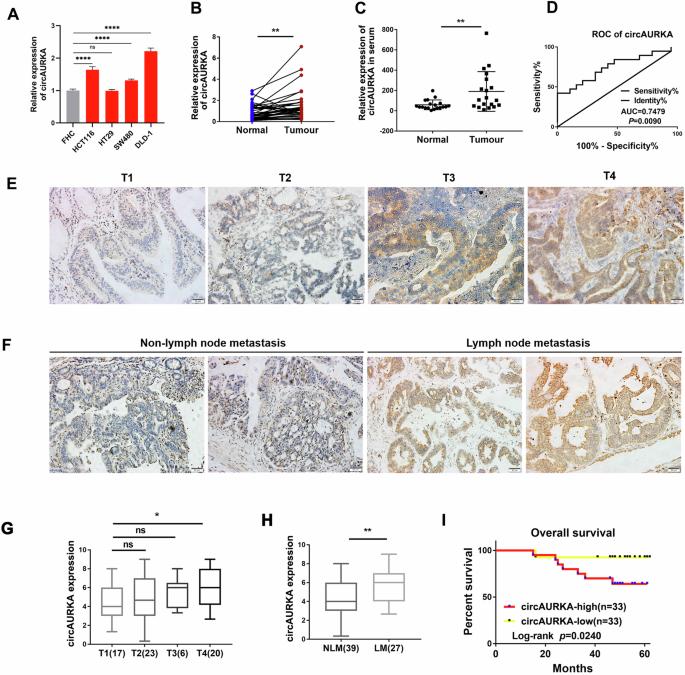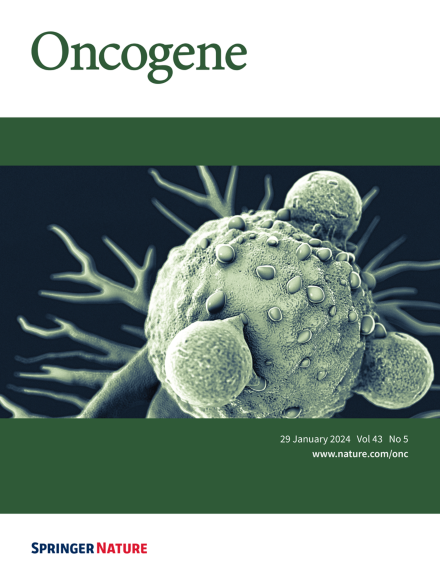靶向 CircAURKA 可通过增强 CTNNB1 蛋白降解防止结直肠癌进展。
IF 6.9
1区 医学
Q1 BIOCHEMISTRY & MOLECULAR BIOLOGY
引用次数: 0
摘要
结直肠癌(CRC)的肿瘤进展严重影响患者的预后。对于晚期 CRC 患者,仍需不断探索更有效的靶向治疗药物。环状 RNA(circRNA)参与肿瘤生物学调控。通过之前的高通量 RNA 测序,我们筛选出了在 CRC 中显著高表达的 circAURKA。体外实验研究了该 circRNA 对 HCT116 和 SW480 细胞增殖和转移的影响。此外,我们还利用EdU实验、Transwell实验、裸鼠异种移植肿瘤模型和裸鼠尾静脉转移模型来研究circAURKA对CRC增殖和转移的影响。从机制上,通过荧光原位杂交(FISH)、RNA牵引、RNA免疫沉淀(RIP)、蛋白质共免疫沉淀(co-IP)实验和动物模型来证实circAURKA的潜在机制。CircAURKA在CRC组织和结直肠细胞中明显高表达,主要存在于细胞质中。该circRNA促进了CRC细胞在体外和体内的增殖和转移。在分子机制方面,circAURKA通过促进ACLY与CTNNB1蛋白的相互作用,抑制了CTNNB1蛋白的降解,从而促进了CRC细胞的增殖和转移。此外,circAURKA的稳定性还受m6A甲基化修饰的调控。这项研究揭示了circAURKA通过抑制CTNNB1蛋白降解促进了CRC的增殖和转移,为开发控制CRC进展的靶向药物提供了依据。本文章由计算机程序翻译,如有差异,请以英文原文为准。

Targeting CircAURKA prevents colorectal cancer progression via enhancing CTNNB1 protein degradation
Tumor progression of colorectal cancer (CRC) seriously affects patient prognosis. For CRC patients with advanced-stage disease, it is still necessary to continuously explore more effective targeted therapeutic drugs. Circular RNAs (circRNAs) are involved in the regulation of tumor biology. We screened circAURKA, which was significantly highly expressed in CRC by previous high-throughput RNA sequencing. In vitro experiments were performed to investigate the effect of the circRNA on the proliferation and metastasis of HCT116 and SW480 cells. In addition, we used the EdU assay, Transwell assay, nude mouse xenograft tumor model and nude mouse tail vein metastasis model to examine the effect of circAURKA on the proliferation and metastasis of CRC. Mechanistically, fluorescent in situ hybridization (FISH), RNA pull-down, RNA immunoprecipitation (RIP), protein coimmunoprecipitation (co-IP) experiments and animal models were performed to confirm the underlying mechanisms of circAURKA. CircAURKA was significantly highly expressed in CRC tissues and colorectal cells and mainly present in the cytoplasm. The circRNA promoted the proliferation and metastasis of CRC cells in vitro and in vivo. In terms of the molecular mechanism, circAURKA inhibited the degradation of the CTNNB1 protein by promoting the interaction between ACLY and the CTNNB1 protein, thereby promoting the proliferation and metastasis of CRC cells. In addition, circAURKA stability was regulated by m6A methylation modification. This study revealed that circAURKA promoted the proliferation and metastasis of CRC by inhibiting CTNNB1 protein degradation, providing a basis for the development of targeted drugs to control CRC progression.
求助全文
通过发布文献求助,成功后即可免费获取论文全文。
去求助
来源期刊

Oncogene
医学-生化与分子生物学
CiteScore
15.30
自引率
1.20%
发文量
404
审稿时长
1 months
期刊介绍:
Oncogene is dedicated to advancing our understanding of cancer processes through the publication of exceptional research. The journal seeks to disseminate work that challenges conventional theories and contributes to establishing new paradigms in the etio-pathogenesis, diagnosis, treatment, or prevention of cancers. Emphasis is placed on research shedding light on processes driving metastatic spread and providing crucial insights into cancer biology beyond existing knowledge.
Areas covered include the cellular and molecular biology of cancer, resistance to cancer therapies, and the development of improved approaches to enhance survival. Oncogene spans the spectrum of cancer biology, from fundamental and theoretical work to translational, applied, and clinical research, including early and late Phase clinical trials, particularly those with biologic and translational endpoints.
 求助内容:
求助内容: 应助结果提醒方式:
应助结果提醒方式:


